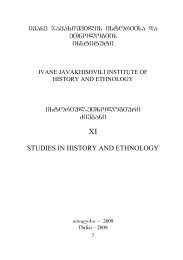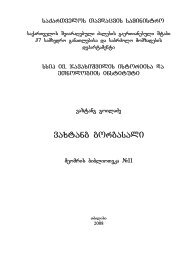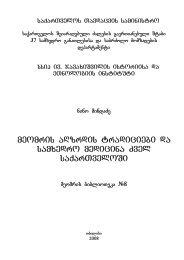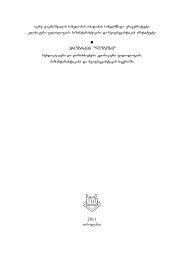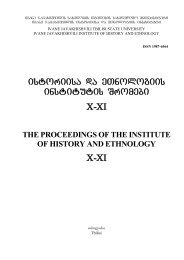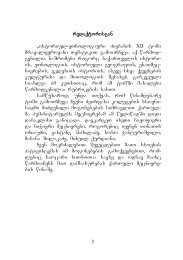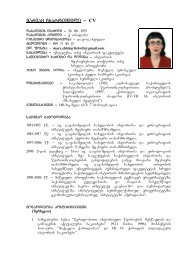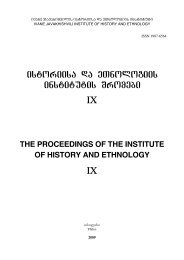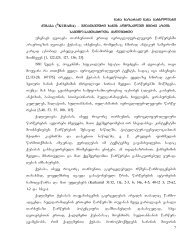programa "logosi"
programa "logosi"
programa "logosi"
Sie wollen auch ein ePaper? Erhöhen Sie die Reichweite Ihrer Titel.
YUMPU macht aus Druck-PDFs automatisch weboptimierte ePaper, die Google liebt.
nient’ appears to be a derivative of the stative verb *dhabh- ‘to be appropriate’,<br />
formed according to a productive model. The base verb, however, is<br />
not attested in the Aryan/Greek/Armenian dialectal area of the Indo-<br />
European, which makes one wonder whether it might represent an innovation<br />
of the Central European dialects, or even a borrowing from the Central<br />
European substrate. In both cases, Arm. darbin ‘blacksmith’ emerges as an<br />
isolated formation.<br />
An attempt has been made to show that a cognate of Arm. darbin is attested<br />
in Anatolian, a sister language family of the classical Indo-European.<br />
H. Eichner (1975: 81, fn. 5) compared the discussed form with the Hittite<br />
royal title tabarna- / labarna- that is also attested as a Hittite personal name.<br />
If one accepts this proposal, then the form *dhabhro- (vel sim.) is to be<br />
reconstructed for the common ancestor language of Indo-European and<br />
Anatolian, referred to as Indo-Hittite or Early Indo-European. Consequently,<br />
the absence of the base-form *dhabh- in the Aryan/Greek/Armenian<br />
dialectal area must be deemed accidental, and the Indo-European antiquity<br />
of Arm. darbin would appear to be vindicated.<br />
Yet, subsequent research has shown that Eichner’s suggestion stumbles<br />
upon very serious morphological difficulties. The Hittite royal title tabarna-<br />
/ labarna- can be unprobrematically derived from the well-attested Luwian<br />
stem tabar- ‘to rule’, and therefore –r- does not appear to represent an adjectival<br />
suffix in this case. There are no indications whatsoever that the stem<br />
tabar- meant anything like ‘to be good’, or ‘to be appropriate’ in Anatolian.<br />
As a matter of fact, some forms, like LABRANIOS, an epithet of Zeus attested<br />
in Cyprus, or λαβύρινθος , the name of the royal palace in Crete (the<br />
Labyrinth), which is so prominent in Greek mythology, indicate that the<br />
root *δabar- (vel sim.) is likely to represent the Mediterranean (non-Indo-<br />
European) substrate term pertaining to the sphere of kingship. I have defended<br />
this thesis at length in Yakubovich 2002: 93-116. While many details<br />
of my conclusions cannot be regarded as generally accepted at the<br />
present time, the formal incompatibility of Hitt. tabarna- / labarna- and<br />
Arm. darbin is now acknowledged by C. Melchert, the leading American<br />
authority in Anatolian studies (Melchert, 2003: 19, fn. 18).<br />
Since the genetic comparison does not provide a satisfactory solution,<br />
one can explore a theory that the Armenian word for ‘blacksmith’<br />
represents a lexical borrowing. I suggest that Arm. darbin must be connected<br />
with Hurrian tabrinni- ‘blacksmith’, the meaning of which is now<br />
secured by its attestation in a passage from the Hurrian and Hittite bilingual<br />
literary text known as "The Song of Release". This curious passage contains<br />
a fable about a metallic vessel that rebelled against the craftsman who produced<br />
it, and who was subsequently punished (see Wegner 2000: 192 ff. for<br />
267





